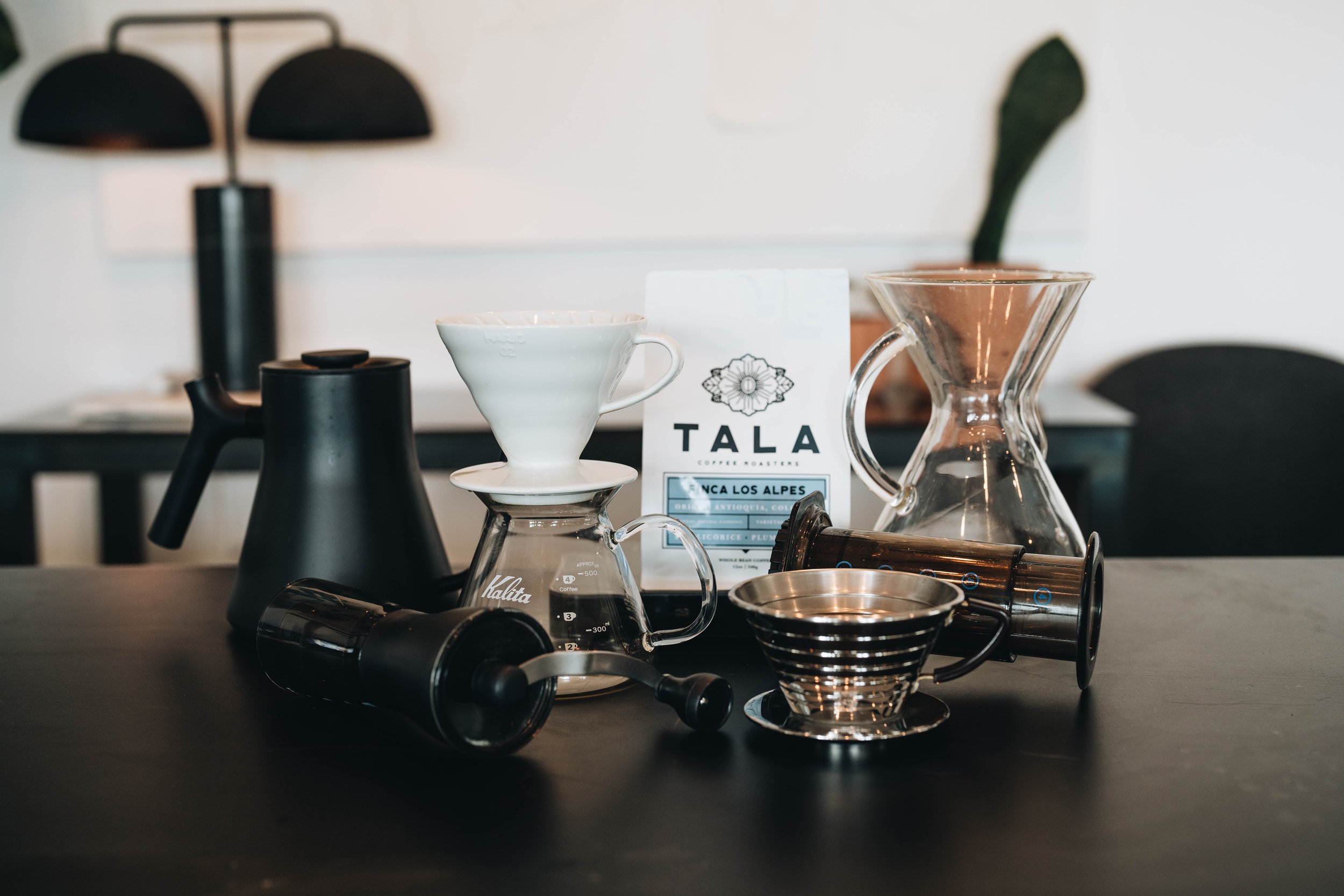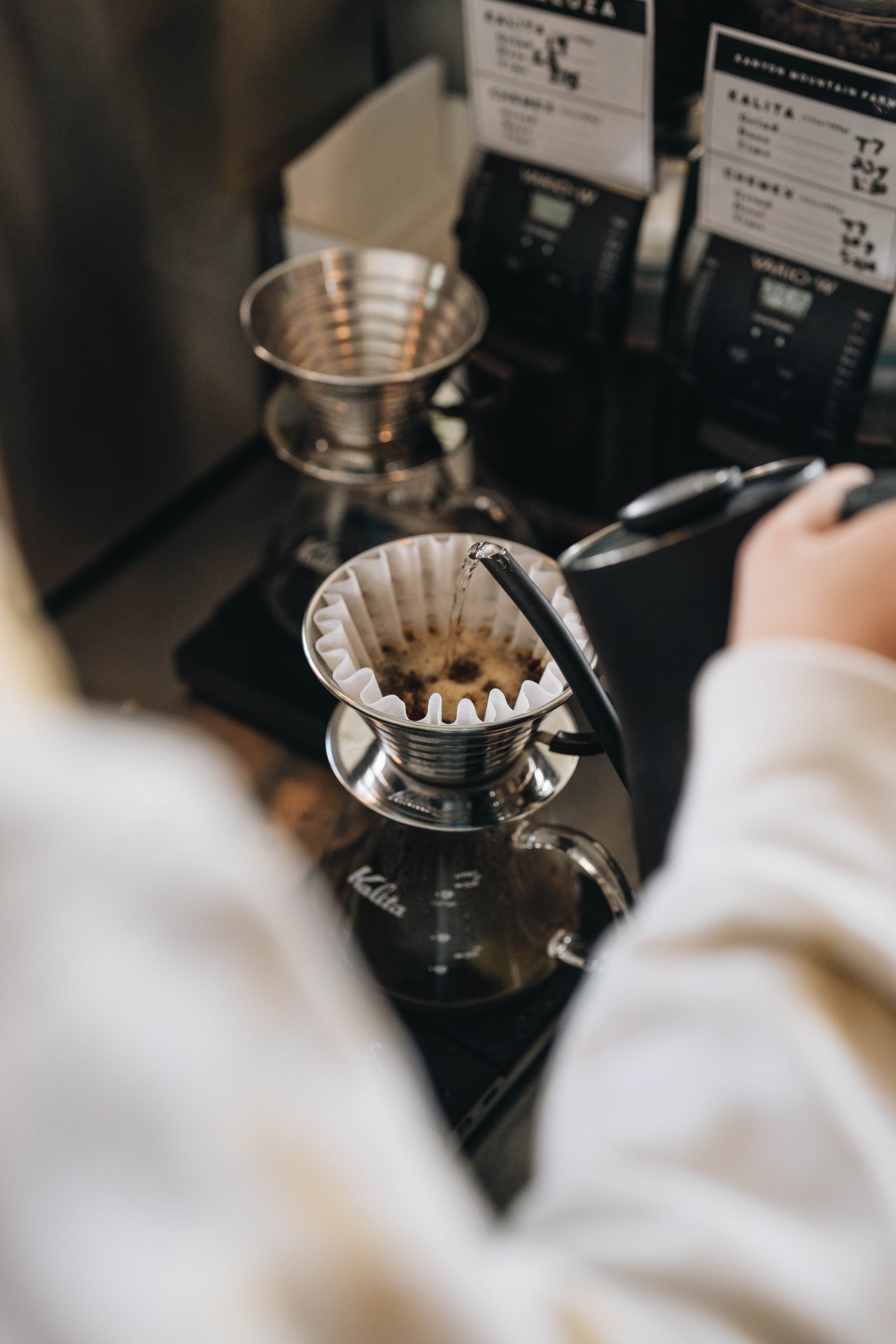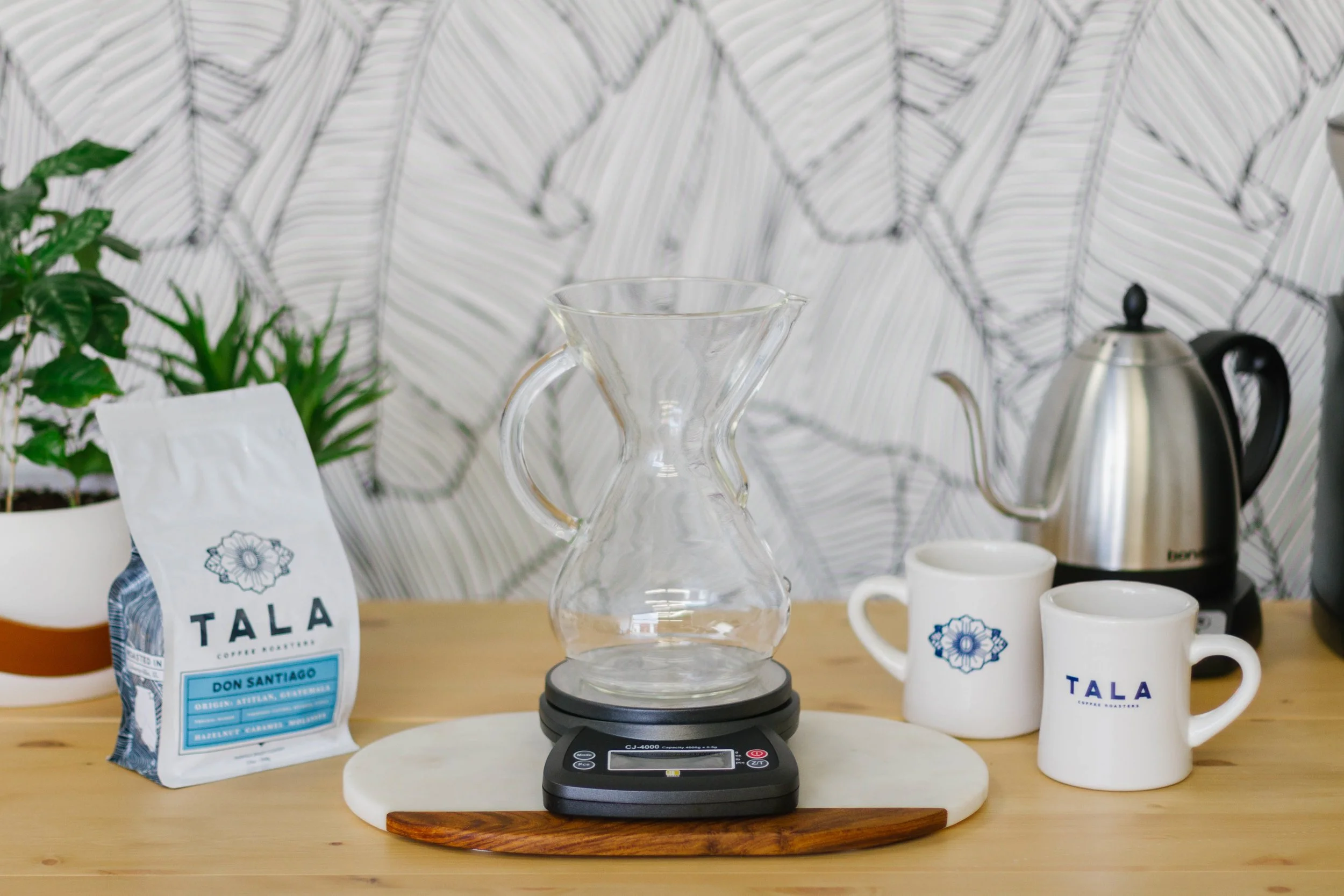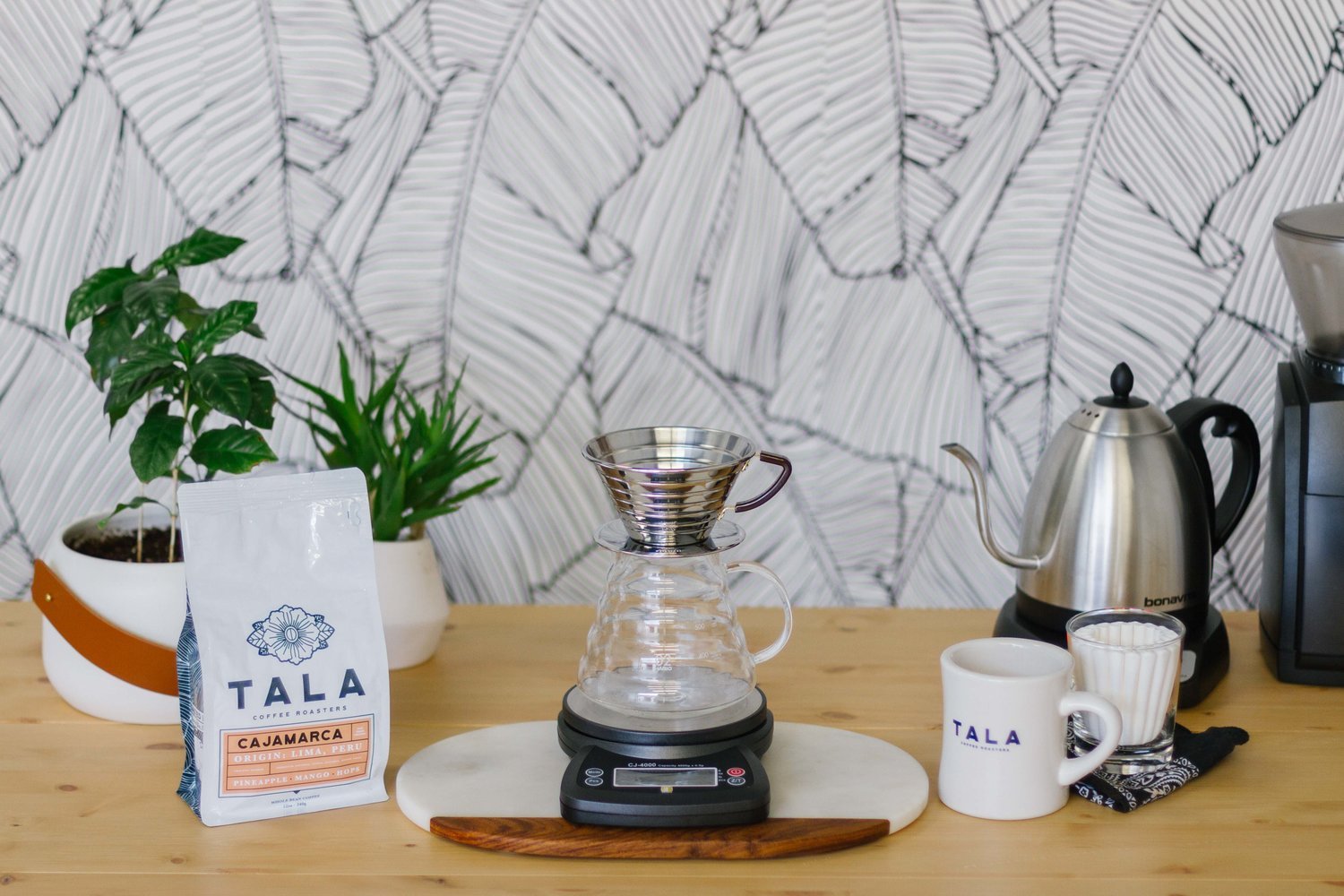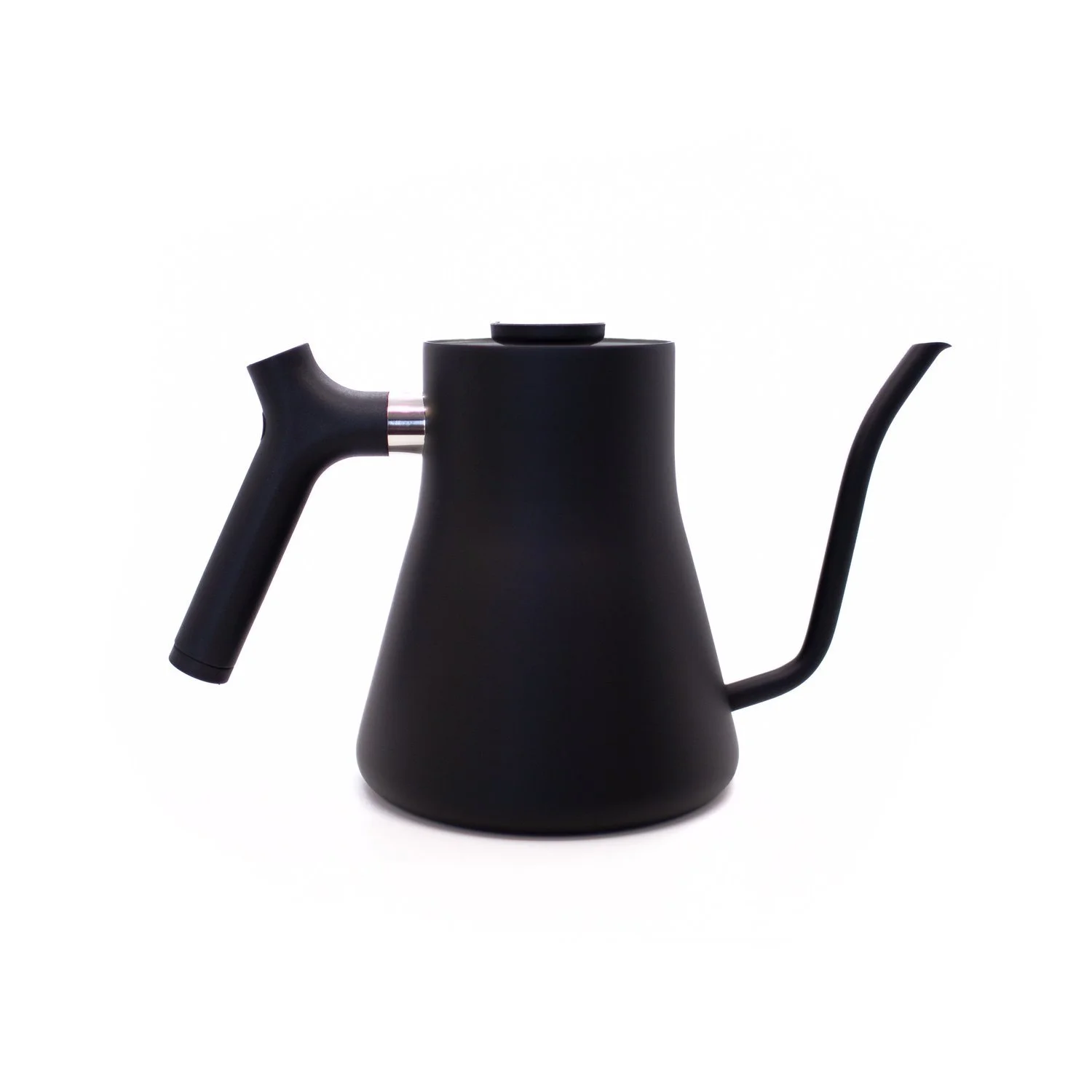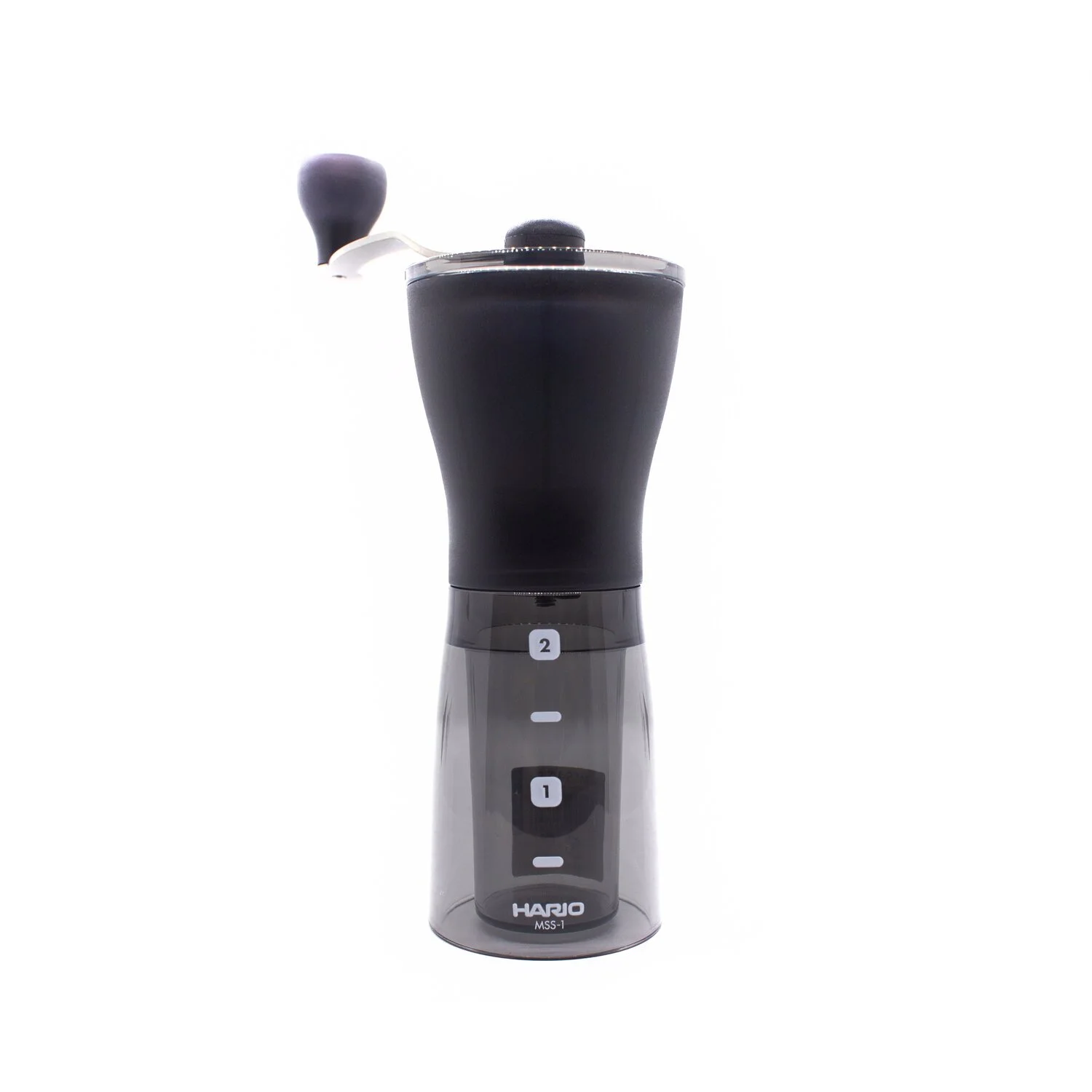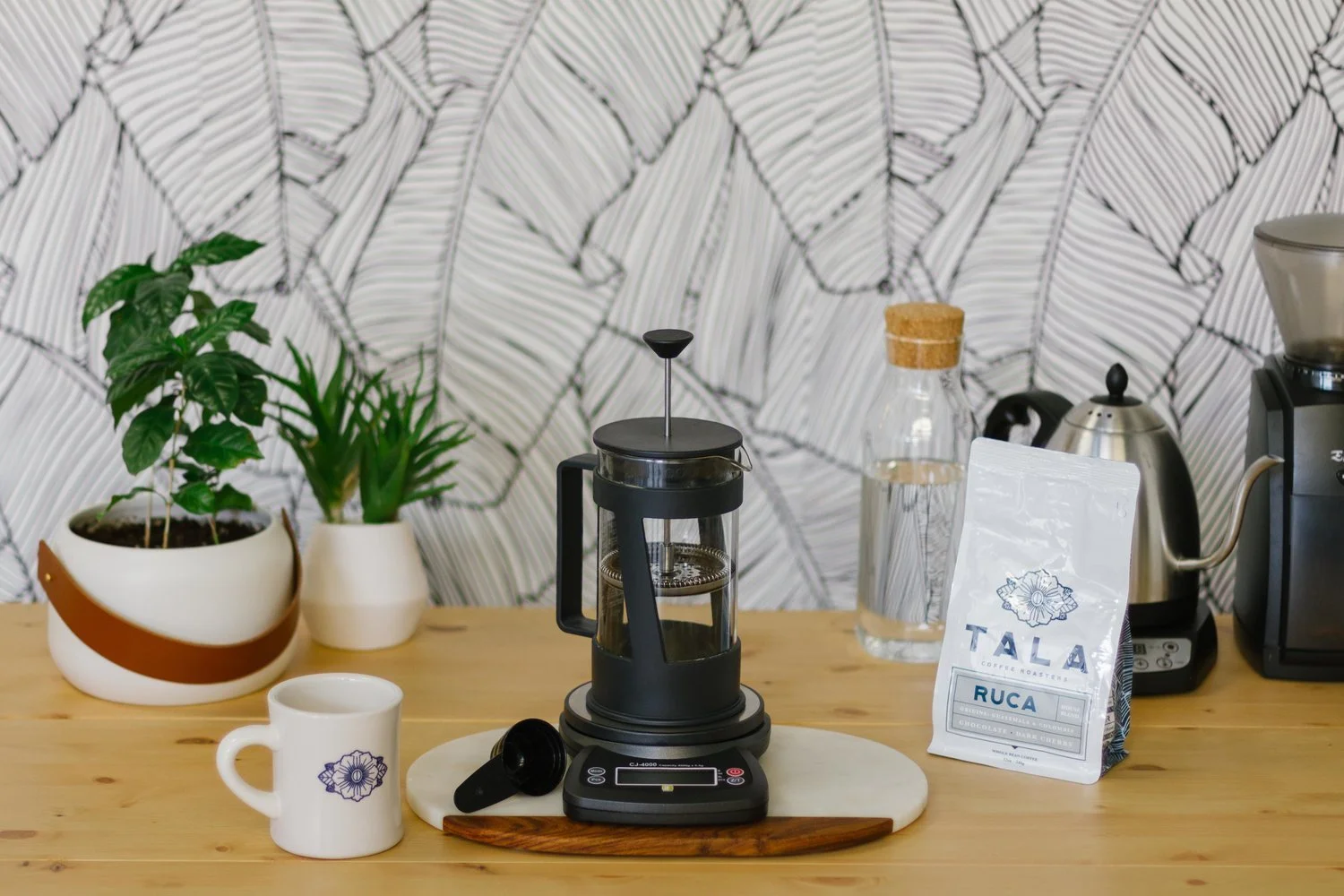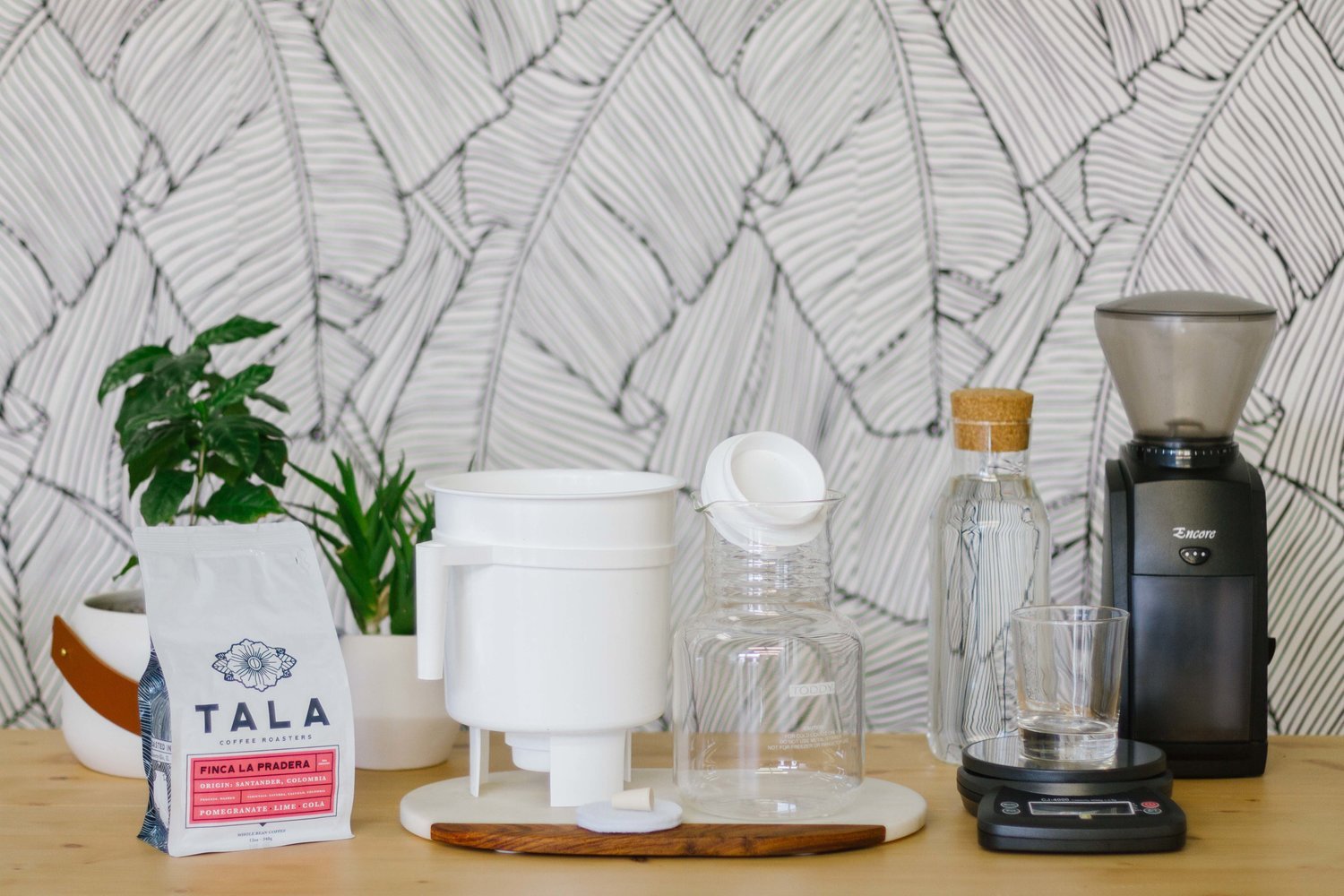No-Nonsense Breakdown of Brewing Methods
When it comes to ordering coffee out, your job is simple: you walk through the doors of Tala, step up to the counter, and order from the heart. Making coffee at home is an entirely different ordeal. Maybe you’ve caught a glimpse at the shelf of retail brewing gear lining the wall en route to our bar and quickly averted your gaze. Perhaps while scrolling through your feed you came across a coffee influencer touting some new gadget promising the best cup of coffee you’ve ever had, fit with a heated comment section roaring with conflicting opinions about the correct techniques and technologies.
Some of us love the details and debate surrounding the best way to brew coffee. For many of us, though, we found a Mr. Coffee that does the trick (day in and day out, I might add) and have no reason to venture out into the frontier of brewing methods. There is absolutely nothing wrong with a beloved machine or method–in fact, finding a way to make coffee that you enjoy and a routine that works for you is the whole point! But if your set-up isn’t quite hitting the spot and you’re looking for a change, this is for you.
It can be overwhelming to think about how many ways one can brew a coffee these days, but, generally speaking, brewing methods can be categorized into two groups: automatic and manual, or hand brewed. In the former, you’ll find auto drip machines. The drip machine is an essentially fool-proof way to get a great cup of coffee every time. If you’re making a large batch of coffee for your household every morning or you rely on the convenience of having your coffee made at the press of a button, a drip machine is a great call. As this is a well researched area, I’ll guide you to the New York Times to parse out some of the best drip coffee makers of 2023 and explain what separates a good machine from a great one. While searching, keep in mind what you value in a coffee maker, like how much coffee you plan on making, your price range, and how much control you’d like to have over the process. If you feel like you want a bit more control over your brew, consider a hand-brewing method.
Manual methods can be further sorted into two categories: pour over and full immersion. Below, I’ll walk through what each category entails and explore a few examples. This is by no means an exhaustive list, and we won’t even be able to scratch the surface on making espresso at home. Use this guide as a starting point to guide your search and pique your interest in methods you may want to experiment with.
What is a POUR OVER method?
The pour over is a favorite among baristas for the control it gives over the flavor of your coffee. Generally speaking, the process is simple: put your coffee grounds in the filter and pour hot water through it. A pour over is perfect for when you want to extract all the right tasting notes in your coffee, and works especially well for brewing lighter bodied, more delicate coffees. In house at Tala, we serve our single origin roasts on pour over on rotation. If you’re taking a bag home to try on your pour over system, try out our Kanzu beans to find those bright fruity tones or our Mendosoyac to explore smooth and nutty ones. With great control, however, comes great responsibility: you’ll want to make sure you have the right grind size, coffee-to-water ratio, and water temperature to extract the right flavors from your coffee grounds. Check out Craft Coffee Spot’s guide to pour over for an in-depth explanation of the method, and, of course, don’t hesitate to ask our team any questions next time you’re in the cafe.
Pour over methods, for your consideration:
The chemex
This highly popular hourglass shaped system has captured the hearts of many, and for good reason. It’s been around since 1941 and is well known for brewing a bright, clean tasting coffee owing to its thicker filter and wider mouth design. This enhanced clarity is a great choice for drawing out the lively flavor notes of your coffee beans. At our cafe we serve our single origin coffees on Chemex, and you can pick up a Chemex and Chemex Filters in the cafe or buy one on our online shop.
The Kalita wave
The Kalita Wave is our go-to pour over method at Tala. With a thinner filter than the Chemex, it lets a bit more body into your cup of coffee, and its flat bottom design results in a smooth, rich and even extraction. By adjusting your grind size, water temperature, and dose you have full reign to experiment with the flavor profile of your coffee. Buy one at Tala in the cafe or online.
Don’t forget the gear you’ll need!
One of the drawbacks of pour over coffee is that it requires more precision and—therefore—more equipment. Whether you’re making a Chemex, a Kalita, a V60, or any other pour over, we highly recommend you have a scale, a burr-grinder and a precision-pour kettle to start. These bare essentials of coffee brewing will take you far in your pour over journey.
Although we always recommend weighing your coffee and grinding precisely, only pour over methods require the exactness of a precision-pour spout. As a plus, the Fellow Stag Kettle also has flow-rate control which allows even better control while pouring.
Any scale will get the job done, but we love the Timemore Scale for its precision and the added benefit of a timer so you have what you need to make your pour over when you need it.
There are many different burr-grinders, but they can often be an investment. If you’re just getting into pour overs, we recommend the hand-grinder which offers great precision without the price tag—and you get an arm workout in!
What is a full immersion method?
If you’re looking for a rich, evenly extracted cup of coffee and a more hands-off process, a full immersion system might be for you. From the ever-classic French Press to the spunky Aeropress, immersion methods vary more than pour over. Finding a method that suits your lifestyle, taste, and serving size is key when it comes to picking the right immersion brewer for you.
The French Press
The French Press is one of the most well-known pieces of brewing equipment out there. Comprised of a glass, metal, or ceramic body with a metal plunger to steep your grounds in, the French Press makes a full bodied, and rich cup of coffee, trading clarity for body. A house blend like our Ruca would be perfect to try out on this this time-honored brewing method. Make sure your grounds are ground coarsely, and take a quick look at a tutorial before to get all variables just right for a perfect brew.
the aeropress
The Aeropress is one of the coolest brewing methods right now. Designed by frisbee manufacturers (you hear me!) it utilizes both immersion and pressure. It’s made entirely of BPA-free plastics, resulting in a lightweight, portable, and almost indestructible design that makes it perfect for travel. The Aeropress is versatile, but only brews one cup at a time, so if you’re looking to make coffee for the family every morning this might not be for you. Grab your Aeropress online or in store.
toddy cold brew
For those of us who don’t drink coffee unless it's served over ice, look no further than the Toddy cold brew system. The Toddy uses cold water to churn out large batch, delicious cold brew from the comfort of your home. Grab a Toddy at Tala!
What method should you choose?
So what is the best way to brew coffee? There has to be a winning method, right? We at Tala try our best to be honest, straightforward, and judicious in our coffee guidance, but at the end of the day there most definitely is a best way to brew coffee. The number one method to brewing your coffee is… the one that you love. Awwwwwwwwww.
In all earnestness, if you can crank out a cup of Joe that tastes great to you in a manner that feels right in your routine, you won! Be sure to remember, however, that a cup of coffee is only as good as the coffee bean itself, and how you extract from it. For great coffee, pick up a bag of freshly roasted beans to your liking (check out our blog post on how to read our single-origin labels), grind them to the appropriate size, use filtered water, and weigh out your beans to measure out a ratio of coffee to water of approximately 1:16 before taking your new tech for a spin. For specific information on how to use the methods mentioned here, check out our very own brew guides. If you have any questions about brewing methods, filtered water, or the perfect ratio of bean to water, don’t hesitate to stop by the cafe and ask a crew member all of the above. Happy brewing!
Katie Wynn
After going to school in Vermont, Katie is back in the Chicagoland area of her youth. You’ll catch her in the Highwood Cafe bringing fun and humor to every interaction, especially if you’re chatting about hockey, history, or amateur horticulture. Katie’s favorite drink at Tala is a classic cappuccino with a packet of sugar in the raw, but she’ll never say no to an iced oat milk matcha latte.

